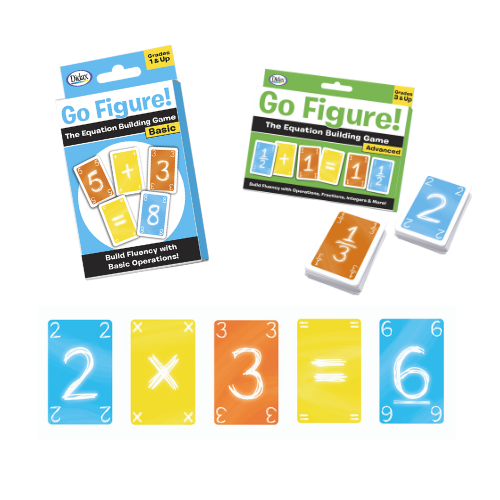8 Reasons Hands-On Learning Should Always Play a Role in Math Education
- By Didax Educational Resources
- Jan 22, 2024
Mathematics can be a challenging subject for many elementary students. The abstract nature of numbers and equations can lead to frustration and gaps in understanding of foundational concepts for many students. Manipulatives can be a powerful tool that changes the way students perceive and learn math. By incorporating tangible materials and real-life experiences into math education, we can create a more interactive and enjoyable learning environment. In this blog, we'll explore the numerous reasons why hands-on learning should play a significant role when teaching math to elementary students.

1. Enhanced Understanding
One of the primary benefits of hands-on learning in math is that it fosters a deeper understanding of mathematical concepts. By using physical objects like counters, building blocks, or measuring tools, students can see, touch, and manipulate these objects to explore mathematical principles. This tangible connection helps bridge the gap between abstract ideas and concrete reality, making it easier for young learners to grasp complex concepts.
2. Increased Engagement
Hands-on activities are inherently more engaging than traditional textbook-based learning. Students enjoy using their creativity and problem-solving skills to work through math challenges, which makes learning more fun and less intimidating. This engagement not only boosts their interest in the subject but also encourages active participation in class.
3. Multi-Sensory Learning
Every student has a unique way of learning, and hands-on activities support differentiation in the classroom. Through touch, sight, and sometimes even sound or smell, students can experience math in multiple sensory modalities. This multi-sensory approach helps make math more accessible to diverse learners.
4. Real-World Application
Hands-on math activities create a bridge to the real world, demonstrating the practical applications of mathematical concepts. For instance, measuring ingredients in a cooking project to learn fractions or calculating the area of a garden can help students see the relevance of math in their everyday lives. This not only makes learning math more interesting but also shows its utility beyond the classroom.
5. Improved Retention
Experiential learning often leads to better retention of information. When students actively participate in hands-on activities, they remember the concepts more effectively because they've internalized them through direct experience. This retention can have a long-lasting impact on a student's mathematical knowledge and problem-solving skills and will support future success in math.
6. Collaboration and Communication
Hands-on learning encourages collaboration and communication among students. Group projects, games, and interactive activities promote teamwork and the exchange of ideas. Students not only learn math but also develop essential social emotional and communication skills that are valuable in both educational and real-life contexts.
7. Reduced Math Anxiety
Math anxiety is a common problem among elementary students, which can lead to avoidance of math-related activities. Hands-on learning can help reduce this anxiety by providing a less intimidating and more approachable way to interact with math. As students gain confidence through interactive experiences, their fear of math decreases.8. Supports Differentiated Instruction
Hands-on learning allows for personalized and differentiated instruction. Teachers can easily adapt activities to suit the needs of individual students, providing extra support to those who require it and additional challenges to those who excel. This helps ensure that every student can progress at their own pace.
Hands-on learning is a vital approach to teaching math in elementary schools. By integrating tangible, interactive experiences into the curriculum, educators can make math more concrete, understandable, engaging, and enjoyable for young learners. The benefits of hands-on learning go far beyond mathematical skills; they support cognitive development, problem-solving, and communication skills that prepare students for success in both their academic and real-world endeavors. The more educators that embrace hands-on learning the more likely they are to unlock the full potential of their students in math.







 © 2025 Didax, Inc. All Rights Reserved.
© 2025 Didax, Inc. All Rights Reserved.